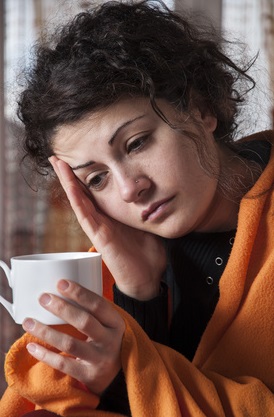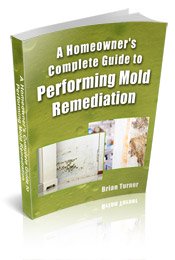Find a Mold Specialist Now
Click or Call, Toll-Free 24/7
Mold Symptoms
You may actually be experiencing mold symptoms if you’ve been suffering from flu-like symptoms lately, but don’t have a fever. Mold exposure symptoms often resemble hay fever or cold symptoms, but only occur in the presence of mold, of course. You may be surprised at how little mold it takes to cause some people to experience symptoms of mold exposure, especially little children, elderly people and people with respiratory or immune system disorders. Even healthy adults can be affected, though.
If you’ve had any flooding in your home, a leaky roof or leaky pipe, or other place where water came in and materials meant to be kept dry remained wet for at least a few days, you may have a mold problem. If you’ve had a leaky pipe under the kitchen sink or a leaky window in the basement or something similar, you may not even realize there’s a problem. If you have symptoms of exposure to mold, you should check your house for dampness.
Common Mold Exposure Symptoms:
- Hay fever-like symptoms
- Flu-like symptoms, without fever
- Asthma attacks
- Runny nose
- Sneezing
- Coughing
- Respiratory congestion
- Headache
- Sore throat
- Itchy, watery eyes
- Hypersensitivity pneumonitis (a pneumonia-like illness)
- Skin rash or irritation
- Nausea
- Opportunistic infections (like pneumonia) in people with compromised immune systems (in this case, you will have a fever)
- Possible liver damage (more studies are needed to determine this)
- Possible cancer (more studies are needed to determine this)
Treating Mold Symptoms:
It is possible to treat many of the symptoms of exposure to mold, although some, like liver cancer, are very difficult to treat, but the only really effective treatment for most symptoms is removing all mold from the environment.
- Asthma medications can be used to treat asthma attacks that are triggered by mold exposure, but will be of limited effectiveness and symptoms will only return later.
- Allergy medications may provide some relief but again, symptoms will only return later.
- Analgesics like aspirin or acetaminophen may relieve headaches and sore throats, but again, symptoms will likely return later.
- Cough drops and cough syrups may relieve throat irritation and soothe coughs, but if mold is not removed, symptoms will likely return later.
- Antibiotics should cure many opportunistic infections like pneumonia, although infections can develop again later.
The real key to relieving mold exposure symptoms is removing all traces of mold from the home.
This involves:
- Scrubbing hard, non-porous surfaces with a biocide designed to kill all types of mold.
- Removing and replacing and porous materials like carpets and insulation (seal the contaminated materials in plastic bags before carrying them through the house).
- Cleaning moldy wood, like wall studs, that cannot be replaced. Since its often difficult to remove all of the mold off wood, it usually needs to be encapsulated. Some professionals will sand wood to remove the mold, but this can be very dangerous because so many mold spores will go airborne and can easily be breathed in. Sanding moldy wood should only be done by trained professionals.
- Taping large sheets of plastic over doorways with duct tape to prevent mold spores from traveling from one room to another while you’re cleaning up mold.
It’s important to do the job correctly, otherwise:
- Mold symptoms will return.
- Mold symptoms may get even worse, because it’s easy to be exposed to mold while trying to remove it, and especially easy to breathe in airborne mold spores.
If You Have Symptoms of Mold Exposure, We Recommend a Free Consultation with a Mold Removal Specialist
During a free consultation, a mold removal specialist will:
- Visit your home and assess your mold problem.
- Make sure all mold in the home has been located, including mold you may not have seen.
- Begin to develop a written mold removal protocol, addressing the specific issues faced in your case.
- Advise you about safety precautions that should be taken during the mold removal process to prevent further mold exposure and health risks.
If you’re experiencing mold-related health problems, we recommend you have a professional remove the mold in your home. Even if you choose to do the job yourself, however, a free consultation with a mold removal specialist can benefit you because you’ll get valuable advice and safety tips. To find a mold removal specialist offering free consultations near you, just follow the link.
Return From Mold Symptoms To Our Symptoms Of Toxic Mold Exposure Page
Black Mold Health Symptoms Home Page






